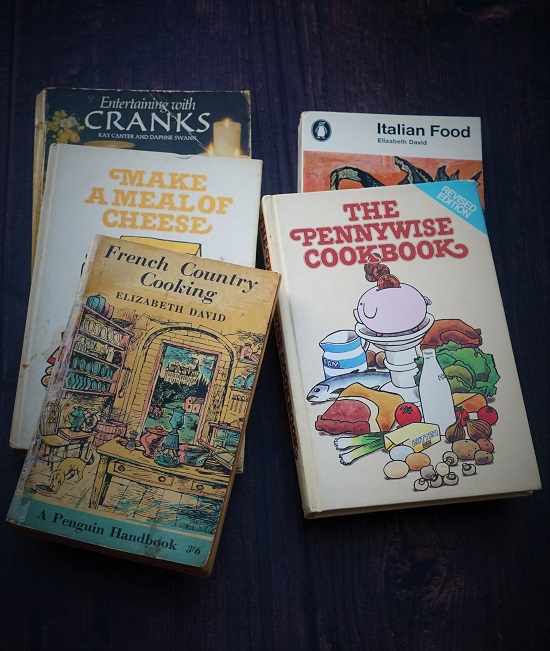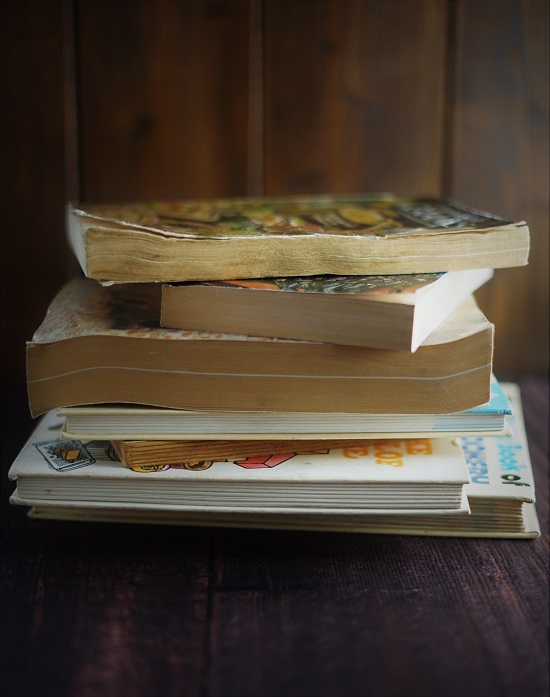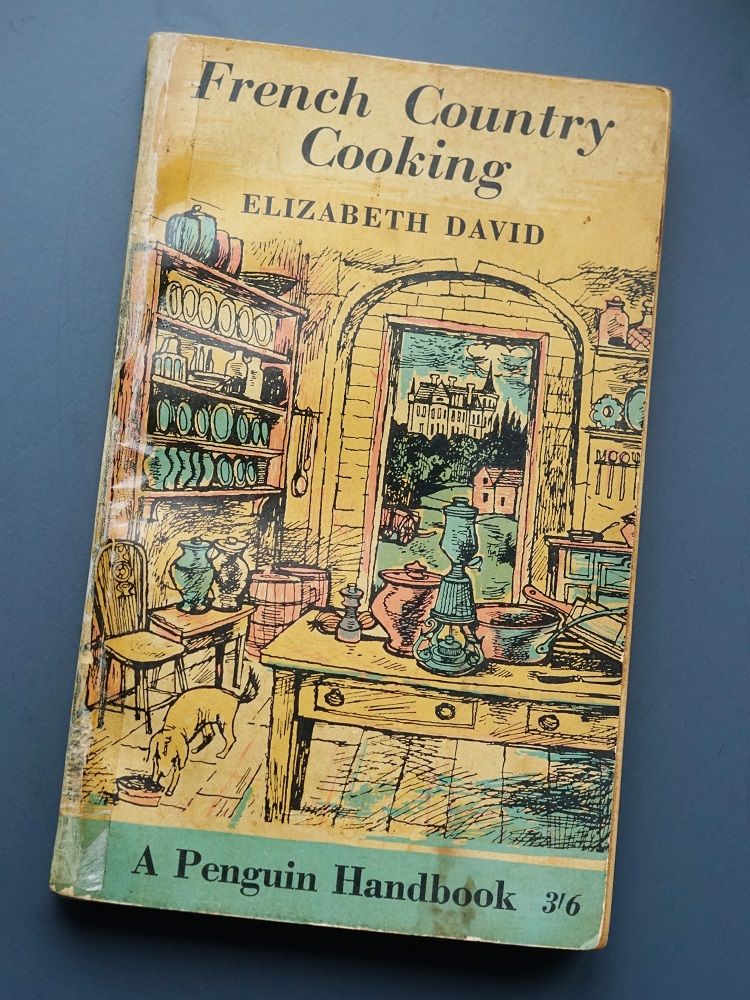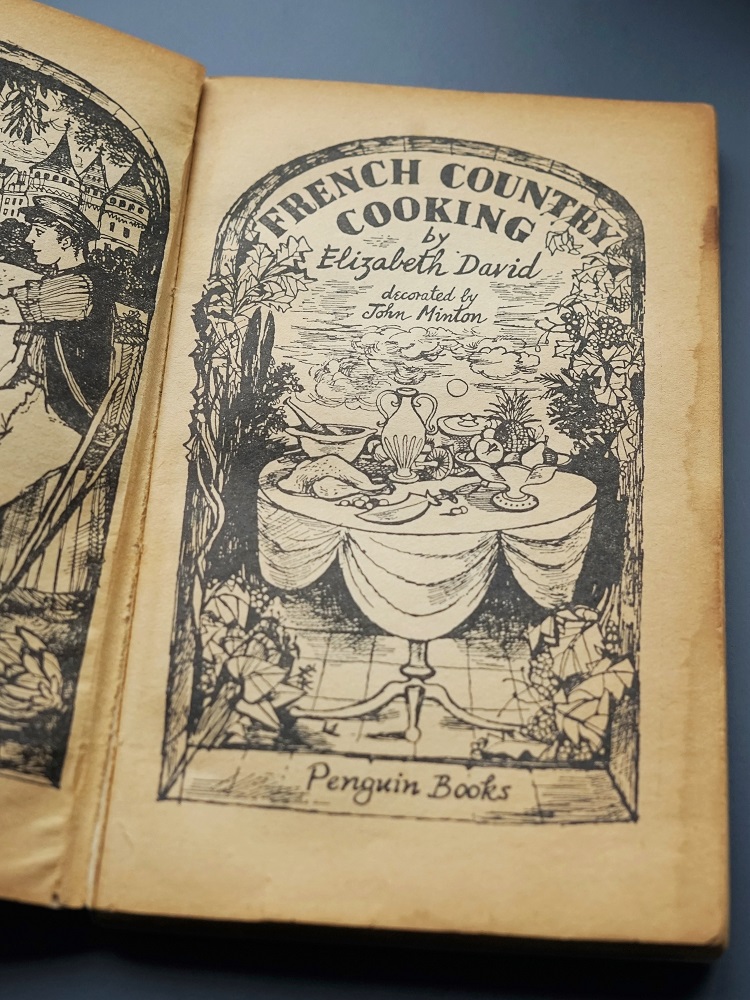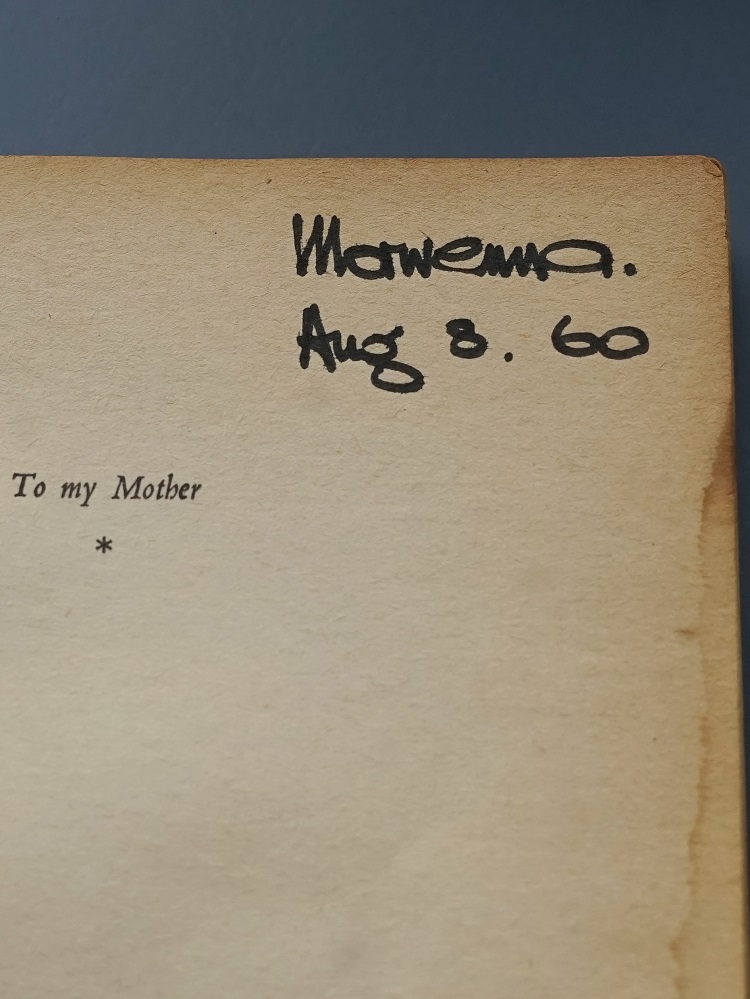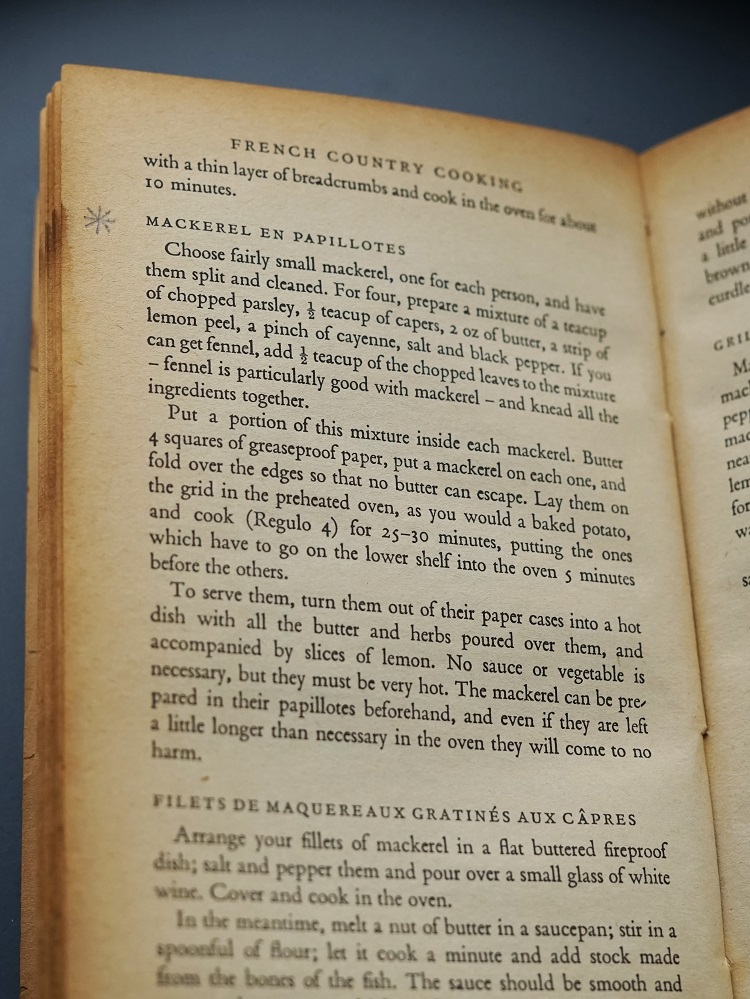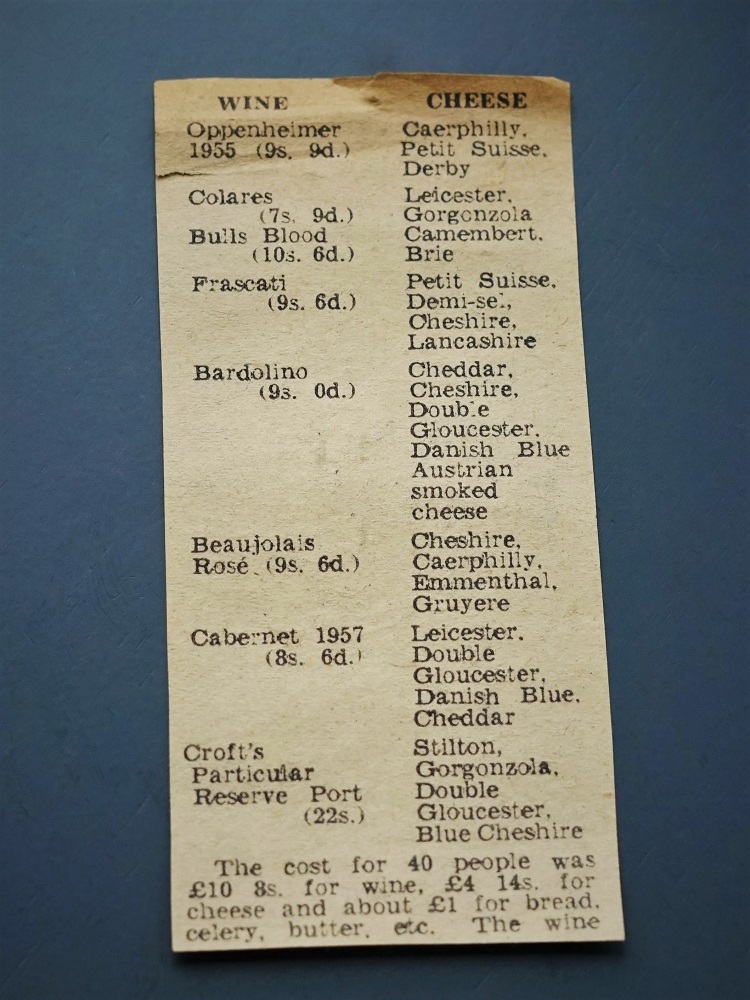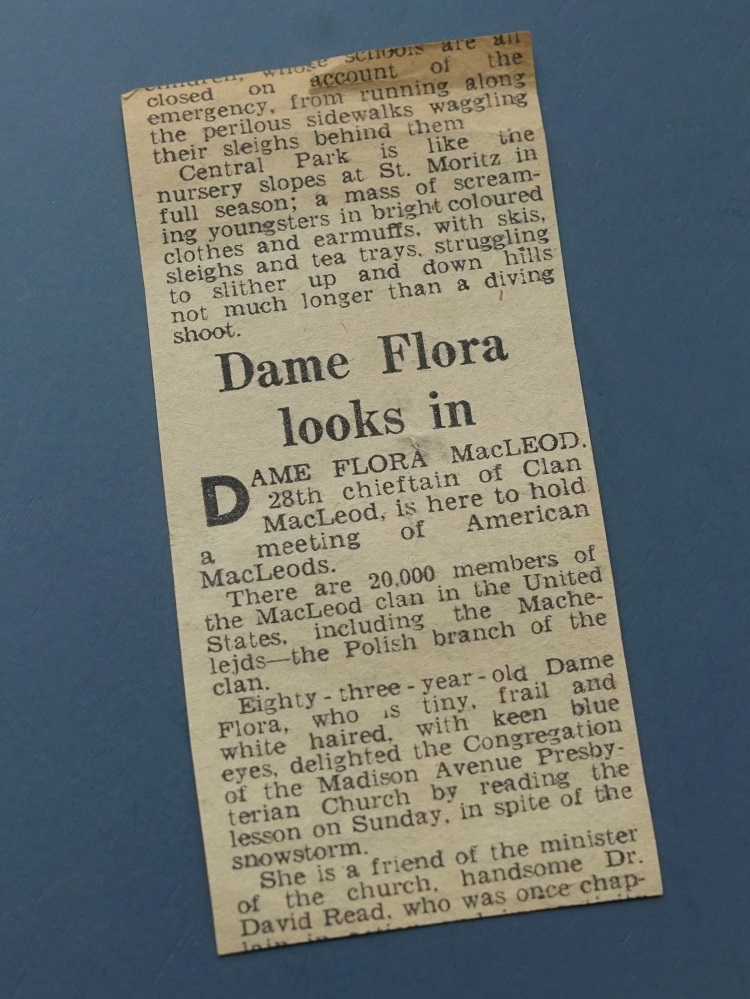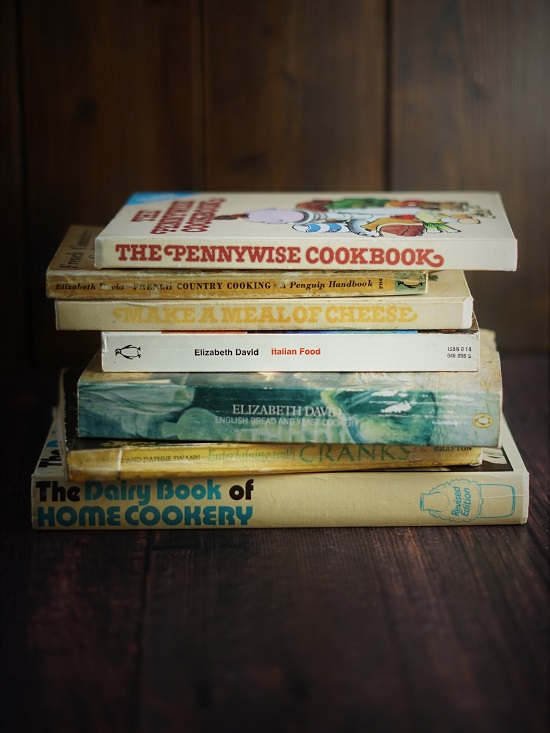Used cookery books: a window into others’ lives
Don’t you love finding evidence of previous owners in used books?
Maybe just a neatly written name on the flyleaf and some underlining. Or, in cookery books, splashes of sauce or perhaps recipes satisfyingly ticked off as the owner cooked them.
In this post I share my favourite find, from an old copy of French Country Cooking by Elizabeth David.
Books & Me
I’ve a long-standing love of second-hand books. Although I guess the preferred term these days is ‘used’ books, without the connotation of being second best.
As a child in a home with next to no books, the public library was my main source of reading material outside school. From the age of eleven I always had a stack of library books I was working my way through. (Incidentally, my cousin Lisa and I discovered libraries and roller-skating around the same time. I think we can probably claim to be only people ever ejected from a library for roller-skating).
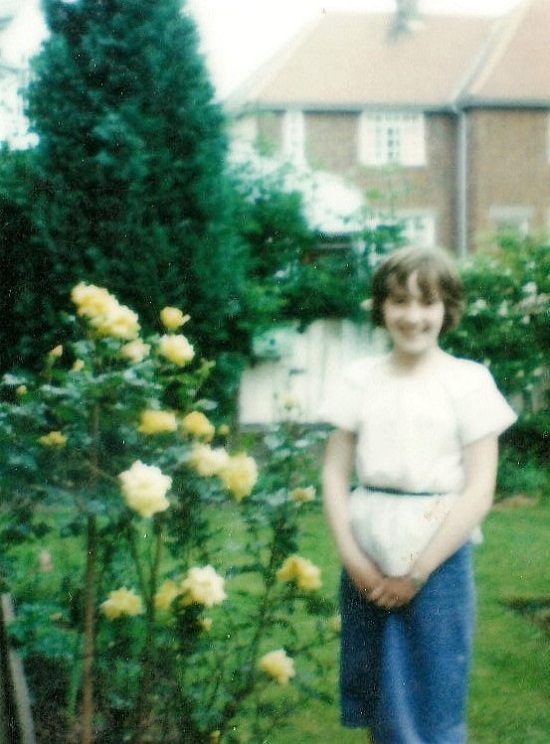
However, as I grew older, I started to want to own books. I suppose part of that urge is because a book collection is in some way a statement of who you are. As I’ve been cooking from an early age, it was natural that this craving for books would extend to used cookery books.
Cookery Books
On a purely practical level though, in an age before access in seconds to every conceivable recipe via your phone, it was particularly important to have your own cookery books. You needed to be able to pull them off the shelf whenever you wanted to look something up. And today, I’ll still scribble notes of changes made to a recipe or how I scaled ingredients up or down. Not so easy to do on a screen when you’ve sticky or floury fingers.
With money in short supply, second-hand books were my only option in my younger years.
But the advantage of a used book, if you’re lucky, is that you may get a window into the lives of those who owned it before you.
My favourite example of this, which also happens to be a cookery book, is my copy of Elizabeth David’s French Country Cooking.
Morwenna
I don’t know how many years ago I bought this book, already yellowing and stained, but it could be fifteen or more. The pencil-written ’75’ inside (presumably pence) suggests it might have been even longer ago than that.
Apart from the price, there are only two other markings in the book.
Near the front is what looks like the name ‘Morwenna’ and the date ‘Aug 8. 60’. It’s been written in what appears to be black felt tip pen. But this isn’t possible as the felt tip (Wikipedia tells me) wasn’t invented until a couple of years later. So a fountain pen then, the ink seeping across the blotting paper-like page.
But I can hardly believe Morwenna wrote it almost sixty years ago. The words are as black as if I’d just written them myself.
French Country Cooking was first published in 1951 and as a Penguin Handbook in 1959. My copy is a 1960 reprint of the latter, price 3/6. So for Morwenna this was a new, not used, cookery book.
The other marking is a pencilled asterisk next to the recipe for Mackerel en Papillotes. I wonder what prompted someone (maybe there was a string of owners between Morwenna and me?) to highlight this dish of ‘fairly small’ mackerel, stuffed with parsley, capers, butter, lemon peel, cayenne, salt and pepper plus, if you could get them, fennel leaves?
Unusually though, it isn’t any annotation in the book that intrigues me most. But something that appears to have been used as a bookmark.
Wine & Cheese
Whenever I select French Country Cooking from my bookcase, I have to take another look at the neatly scissored newspaper cutting I found in it. Sometimes I take down the book just to look at the yellow slip of paper.
There are two columns. To the left is a list of eight wines, their vintage and price. On the right are cheeses to accompany each wine.
There’s Oppenheimer 1955 (9s, 9d) paired with Caerphilly, Petit Suisse and Derby. Cabernet 1957 (9s, 6d) with Leicester, Double Gloucester, Danish Blue and Cheddar. At the end there’s Croft’s Particular Reserve Port at a pricier twenty-two shillings with Stilton, Gorgonzola, Double Gloucester and Blue Cheshire to accompany it.
At first glance, you might assume the list is the author’s suggestion, much like these days you’ll find recommended wines to go with recipes in newspapers and magazines.
But look below the columns and you’ll see it’s a record of an event that’s actually taken place. It reads, ‘The cost for 40 people was £10 8s. for wine, £4 14s. for cheese and about £1 for bread, celery, butter, etc.’ Enticingly, there follows the start of a next sentence, ‘The wine…’ and that’s it.
What was the event? When did it take place? Why was Morwenna, or some other owner of French Country Cooking, interested in it? Were they planning to match all, or some, of the wine and cheese pairings?
Dame Flora Looks In
Despite having this piece of newsprint in my possession for more than a dozen years, it was only recently that I took much interest in the reverse side.
Perhaps it’s because now, if I’m remotely curious about something, I can look it up in a flash on the internet. The technology which means I might buy fewer cookery books has enabled me to investigate a mystery I found in one of my old ones.
The back of the paper has the end of one article and the start of another. The second article is headed ‘Dame Flora looks in’.
The Dame Flora in question is Dame Flora MacLeod, 28th chieftain of Clan MacLeod. The newspaper helpfully tells us that she’s eighty-three-years-old. Finding her date of birth in seconds, courtesy of the internet of course, I can work out that the clipping must be from 1961.
Dame Flora spent much of her life at Dunvegan Castle on Skye. Dunvegan holds a particular place in my food memory as, on Skye one Christmas, we’d had a fantastic meal at the legendary Three Chimneys. On the way back to our rented cottage in Portree, our car got stuck on an icy and snowy (but embarrassingly moderate) hill in Dunvegan. Nothing like the fantastic, flat-topped hills known as ‘Macleod’s Tables’ near Loch Dunvegan which you can see in my holiday photo below. Nevertheless, we had to wait there for several hours for rescue by the breakdown service.
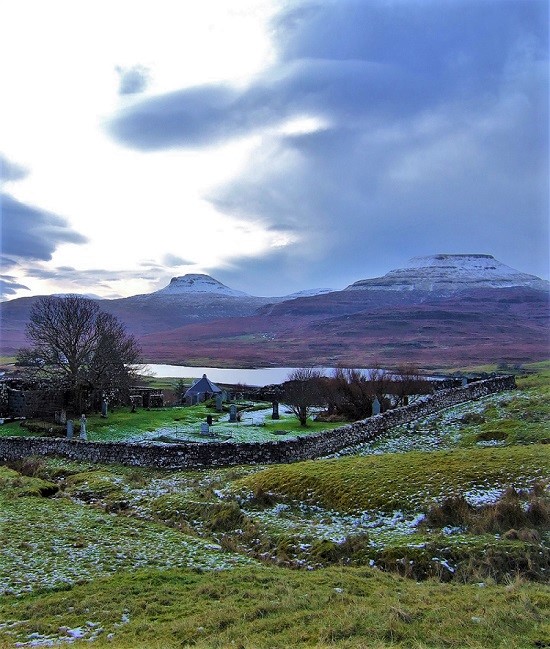
An American Connection
Anyway, the clipping tells us that she ‘is here’ for a meeting of American MacLeods. It goes on to say that this was held at the Madison Avenue Presbyterian Church.
Hang on a moment. The wine prices on the other side of the paper are in pounds, shillings and pence. Virtually all the cheeses listed are English. But this reads as if written by someone in New York.
That’s confirmed by the snippet of article above it. It talks about schools being closed and sleighs on perilous sidewalks. Central Park is said to look like, ‘St. Moritz in full season; a mass of screaming youngsters in bright coloured clothes and earmuffs, with skis, sleighs and tea trays’. I see from another internet search that the winters of 1960 and 1961 were harsh ones, including near-record snow cover and the so-called ‘Kennedy Inaugural Snowstorm.’
I concluded then, that the clipping was from a British newspaper, written by a US correspondent. You’ll know that the most famous of these was Alistair Cooke, who wrote for the Manchester Guardian between 1947 and 1972 and also broadcast his Letter from America from 1946 to 2004. But it’s hard to imagine Cooke being interested in the minutiae of Dame Flora’s doings. Naturally though, he did write about the snowbound Kennedy inauguration.
Unsolved
But if you’re hoping for some sort of denouement, where I find out what the wine and cheese event was, who held it, who went and what-not, then I’m afraid I’m going to disappoint you.
If I was committed, I suppose I could cough up some cash to search the online archives of likely newspapers. A cursory look at the freely available ones hasn’t turned up anything.
But part of the joy of this little piece of yellowing paper is not quite knowing what it was about, nor the significance to the person who cut it out and kept it.
I don’t know what’ll happen to my cookery books, nor all my others, when I go.
But I’d like to think that at least some will end up in the hands of a stranger curious enough to occasionally look through, seeking to learn something about their previous owner.

